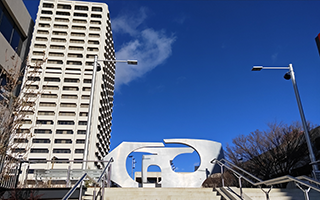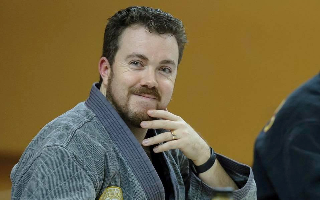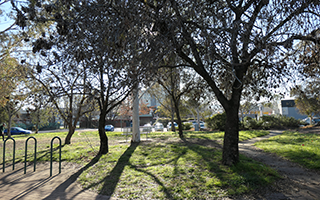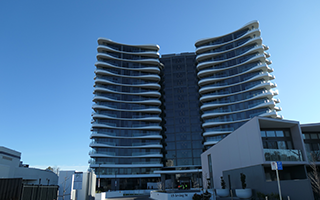 The Coronavirus pandemic has briefly pushed pause on our busy cities. Will things go back to the way they were before COVID-19? Not necessarily and maybe they shouldn’t.
The Coronavirus pandemic has briefly pushed pause on our busy cities. Will things go back to the way they were before COVID-19? Not necessarily and maybe they shouldn’t.
This might be the opportunity to step back and re-imagine what we want our cities, towns and neighbourhoods to look like in the next 20 years.
The urban planning decisions we make today shape our societies. Economic fallout from the COVID-19 pandemic, climate change, population growth and changing demographics will impact on this busy hub in the south of Canberra.
As people have been forced to spend more time in their homes and neighbourhoods, their aspirations for their town may have changed. We asked a group of people who live, work and play in the Woden Valley what their wish list would be for the Woden of 2040?
The Council - Woden Valley Community Council President, Jenny Stewart
The Business Owner – Tom Adam from Canberra Martial Arts & Fitness
The Scientist – Jenny Edwards from Light House Architecture and Science
The Residents – a group of residents from all ages and stages
The Business Owner – Tom Adam from Canberra Martial Arts & Fitness
 Local Phillip business owner and President of the Phillip Business Community, Master Tom Adam started Canberra Martial Arts & Fitness (CMAF) in January 2011 after moving to Canberra with his wife and two young children (they’ve had another since).
Local Phillip business owner and President of the Phillip Business Community, Master Tom Adam started Canberra Martial Arts & Fitness (CMAF) in January 2011 after moving to Canberra with his wife and two young children (they’ve had another since).
Urban renewal and transit corridors
High on Tom’s wish list for the Woden of 2040 is better integration of the business areas ‘north and south of the ‘Marsh’ as Tom refers to Hindmarsh Drive. This is the main access road that separates the Woden Town Centre from the Phillip business district.
“What we want to look at over the next 20 years is how do we draw people in through the public spaces, making the South of Hindmarsh part of the North of Hindmarsh,” says Tom.
He points to the need to balance urban renewal with new development along transit corridors through Woden, including the proposed changes such as the light rail and improvements to the bus interchange.
Tom says that for businesses to really benefit from these major transport infrastructure changes, it’s important to make it appealing for commuters to be able to run errands on their way to and from transit nodes. This means that areas will need to become more pedestrian and cycle friendly.
“They will be looking to spend their money locally,” says Tom.
“There are going to be a lot more people, but they are not going to want to walk into Phillip looking the way it does now”.
 Tom believes the older buildings in places like Phillip will need a facelift that will draw people into the area. He acknowledges that economic reality is a big factor when it comes to funding urban renewal projects and will be more so, post COVID-19. However, he believes, trade-offs and public-private partnerships should not be overlooked as a means of funding projects. He wonders whether renewal projects undertaken by landlords to rejuvenate buildings could be offset against commercial rates as an incentive to invest in upgrading many of these older buildings.
Tom believes the older buildings in places like Phillip will need a facelift that will draw people into the area. He acknowledges that economic reality is a big factor when it comes to funding urban renewal projects and will be more so, post COVID-19. However, he believes, trade-offs and public-private partnerships should not be overlooked as a means of funding projects. He wonders whether renewal projects undertaken by landlords to rejuvenate buildings could be offset against commercial rates as an incentive to invest in upgrading many of these older buildings.
Multifunctional landscapes and economic recovery
While the Phillip Business Community has been lobbying for the beautification of the green areas in the Phillip business district for some time; COVID-19 has reinforced the need for multifunction outdoor spaces. ‘Streeteries’ allow restaurants to put out additional tables that make it feasible to offer dine-in options and still comply with social distancing regulations. Curbside businesses and places for people to sit, exercise and hold community events create a sense of community stewardship. It also improves property values and encourages inward investment. Tom points to the need to draw people into the area. He would like to see a greater diversity of businesses as well as some key anchor tenants in the Phillip business area that will boost local purchasing and create new jobs.
 He also says it’s important to understand how businesses have changed in the last few months and how this might impact on urban planning, especially parking. Since lockdowns began many businesses have had to pivot to offering home deliveries or click and collect options. Many of these businesses are likely to retain and even grow these channels post-COVID and in the next 20 years they have the potential to become busy distribution centres. This should be taken into account when planning and investment in the area is considered.
He also says it’s important to understand how businesses have changed in the last few months and how this might impact on urban planning, especially parking. Since lockdowns began many businesses have had to pivot to offering home deliveries or click and collect options. Many of these businesses are likely to retain and even grow these channels post-COVID and in the next 20 years they have the potential to become busy distribution centres. This should be taken into account when planning and investment in the area is considered.
Changing demographics
High on Tom’s wish list would be a careful consideration of how the many new apartment complexes change the demographics of the Woden area. When you build infrastructure, you are tinkering with social demographics. He says that they are mostly one and two-bedroomed apartments that appeal either to a younger demographic, couples or downsizers. He would like to see more diversity in accommodation with bigger homes that offer 3 and 4-bedrooms and will bring in young families into the area as they tend to spend more with local businesses.
Opportunity for education and business to collaborate
Tom feels that it will be a missed opportunity if business and the new Woden CIT do not find a way to work closely together. Place and proximity to each other can create real opportunities for students to apply new skills in the workplace; for incubating new ideas; stimulating entrepreneurship; and for businesses to attract talent. Tom says the selection of courses on offer should also take into account the make-up of businesses in the area, for example, Woden is a health precinct. What kind of skills would these businesses need in the future?
Tom’s final point is that not only do we need an aspirational twenty-year vision but that we can’t wait until everything settles down post-COVID. We need an actionable timetable and a willingness to think outside the box to start making things happen now – we need to keep moving forward.
Read more: The Scientist – Jenny Edwards from Light House Architecture and Science (Part 3)



